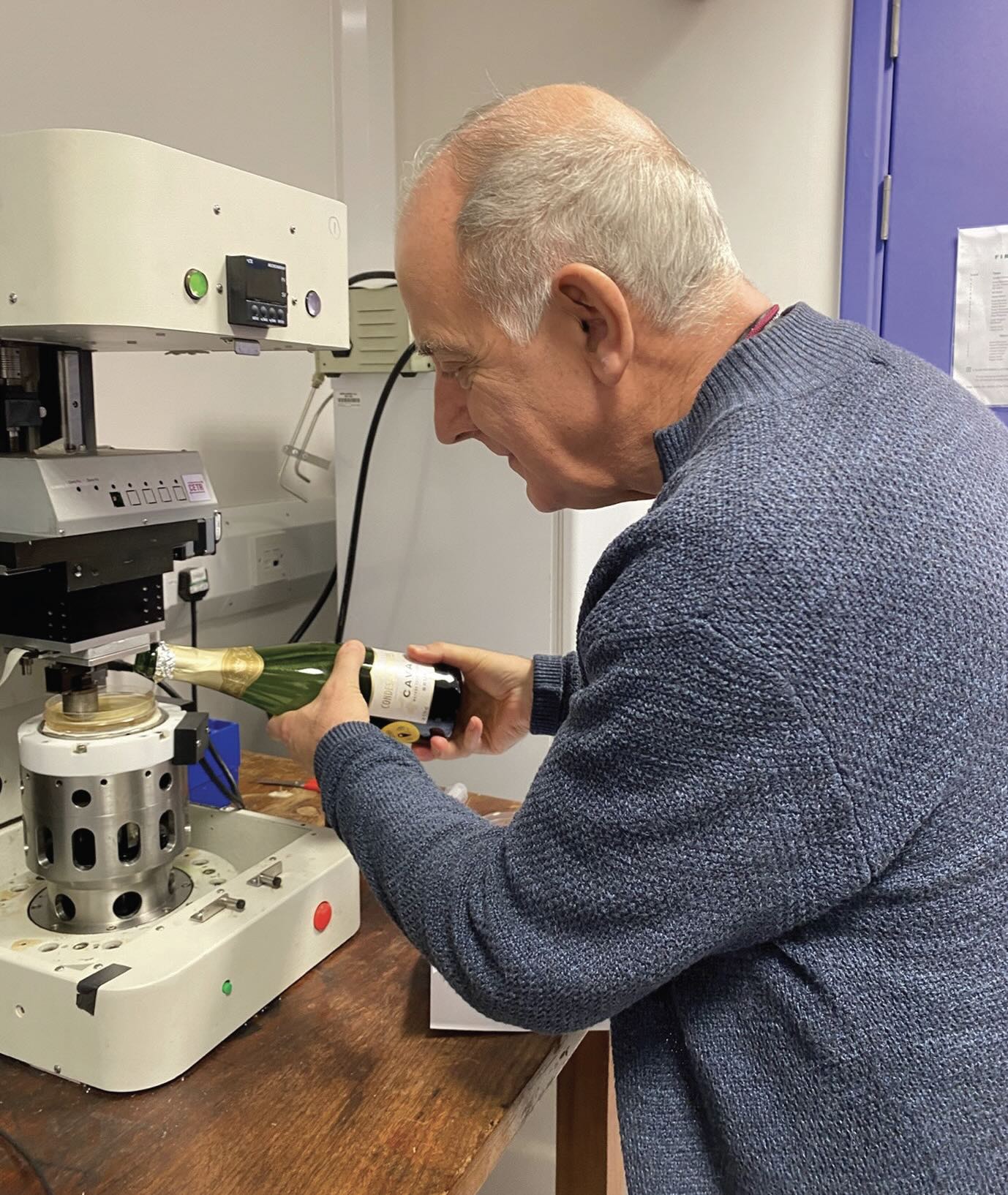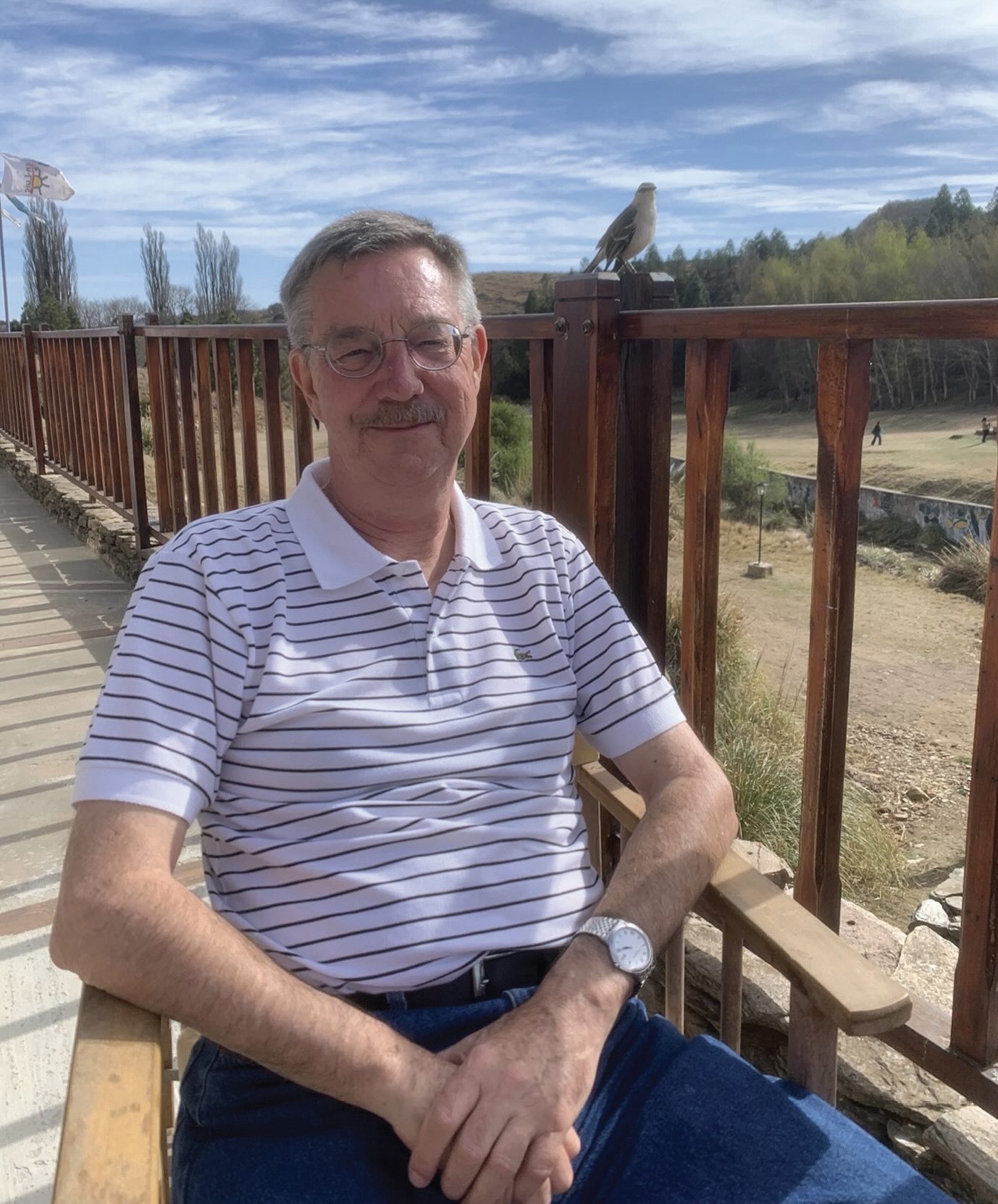Over the edge?
By Drs. Wilfred T. Tysoe & Nicholas D. Spencer, Contributing Editors | TLT Cutting Edge December 2024
After 20 years of writing TLT Cutting Edge columns, the authors have decided to move on to new pastures.
On a cold morning at the end of the year 2000, one of us drove down the interstate from southeastern Wisconsin to the STLE headquarters in northern Illinois to talk to former STLE executive director Ed Salek, to try to persuade him to allow the journal that we had recently founded, Tribology Letters, to be one of the society’s official publications. The focus of the journal was to be on understanding the fundamentals that underpinned tribology, and it would complement the engineering focus of Tribology Transactions. We suggested that, whenever appropriate, we could exchange articles between the two journals. In his quiet, understated way, Ed navigated the proposal through the STLE machinery, and thus began a highly fruitful affiliation between Tribology Letters and STLE.
The next chapter began with STLE’s decision to revamp their society magazine into the brand new “Tribology & Lubrication Technology (TLT).” They asked us if we would write bimonthly articles on recent scientific advances in tribology, and thus the Cutting Edge columns were born. The play on words of the column name has spilled over into many of the titles we have come up with over the last two decades: “Dogma Run Over by Karma,” “A Thought for your Pennies” and “The Continuing Contact Conundrum” being prime examples. While we have always chosen what we thought were the most important and intriguing new studies at the frontiers of tribology, we have tended to focus on articles in Tribology Letters—although others, such as an article on how to produce X-rays by pulling adhesive tape, were just too hard to resist! Many of the pieces focused on novel ways in which the world could be understood through a tribological lens, such as the wear of coins in your pocket, the “tribocorrosion” of a licked lollipop or the challenging (and highly controversial) field of curling tribology. We also took time to write obituaries for those colleagues who had particularly influenced tribological science, including Ken Johnson, Jacob Israelachvili, Mark Robbins and Brian Briscoe.
After our first decade of writing the articles, we published a curated collection entitled “The Cutting Edge of Tribology: A Decade of Progress in Friction, Lubrication, and Wear,” which was highly successful—having the highest worldwide sales of any book based on an STLE magazine! At about the same time, STLE decided to initiate the Tribology Frontiers Conference that would focus more on the fundamental aspects of the field. It also featured a plenary session that highlighted papers from the Cutting Edge columns, which invariably generated much discussion. During that period, in addition to continuing, as the blurb in our book put it, our “witty and insightful short pieces on developments in the science of friction, lubrication and wear,” the column was used to promote several aspects of, and initiatives in, tribology.
First came the “Contact Mechanics Challenge,” which was proposed and curated by professor Martin Müser to compare the ability of various methods to analyze the contact properties of rough, adhesive surfaces. This remains a major issue in tribology, and the goal was to provide workers in the field with a benchmark against which alternative analytical methods could be judged. This effort has continued and was a feature of a recent STLE Annual Meeting. The column was also used to bring potentially transformative developments to the tribology community, and especially STLE, notably the potential importance of artificial intelligence and machine learning in designing new tribological materials.
Another decade has passed, another turning point has arrived, and probably another book needs to be compiled! After much soul searching, we have decided that this will be our last column. There were many considerations that went into the decision, not the least being that you should stop a project when it is still successful, rather than when someone else tells you to stop! The mantle also needs to be passed to younger colleagues—we are both now formally retired from our academic positions, and are embarking on new journeys
(see Figures 1 and 2).
 Figure 1. Nic Spencer, carrying out research on wine-saliva interactions.
Figure 1. Nic Spencer, carrying out research on wine-saliva interactions.

Figure 2. Eddy Tysoe, after a good lunch in the mountains of San Luis province, Argentina.
We hope that STLE members have enjoyed reading the articles as much as we have enjoyed writing them—although, as academics, writing for a deadline was sometimes a challenge! The cutting edge of tribology continues to advance, however, and we look forward to following the inevitable array of exciting developments in store for us over the coming years.
Eddy Tysoe is an emeritus distinguished professor of physical chemistry at the University of Wisconsin-Milwaukee and an honorary professor of physics at the National University of San Luis, Argentina. You can reach him at wtt@uwm.edu.
Nic Spencer is professor of surface science and technology at the ETH Zurich, Switzerland, and editor-in-chief of STLE-affiliated Tribology Letters journal. You can reach him at nspencer@ethz.ch.